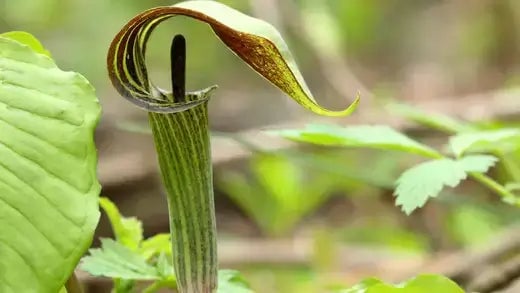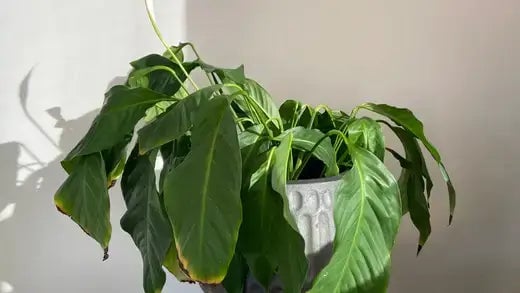If your plants are dying either through drought or lack of attention, there are ways to save them.
First, you need to be familiar with the watering and sunshine requirements for your plant; every plant has the way it needs to be nurtured.
Dying plants are not thriving because they are not getting enough nutrients they need or are not getting enough sunlight or water.
Sometimes planters go overboard by watering too much. Dying plants that are in pots may need larger pots, especially ones that are growing. Be sure to water and make sure the soil is absorbing the water. If your water leaves a pool, then drain accordingly. In the case of dying plants, as much water as possible needs to get to the root. If your plant is suffering from wilted or yellow leafing, you are most likely watering too much.
If your plants are in a pot, then be sure to check the soil with your fingers. If your soil is too watery or muddy, you are overwatering, and if it feels sandy or too dry to the touch, your plant needs more water quickly. Plants appreciate sunlight, but some plants cannot thrive as well in direct sunlight, especially during the growing period. For dying plants, balance how much sun your plant is getting by placing it outside for a few hours of sunlight and then taking it back inside.
Place dying plants by a window sill so they can get the satisfaction of direct sunlight while not being outside. If you’re caught in a season like winter or are constantly bombarded by rainy weather, then try artificial lighting, but make sure you know the proper wattage so your plant can get the proper dosage of lighting.
Another problem that many gardeners overlook is the soil. Plants generally need a good balance of nitrogen and potassium for overall plant and root growth. If you do not know what your PH level in the soil is, be sure to check with your local nursery or purchase organic soil to help your plants out.
You can even use mail-in soil test samples to find out what kind of soil is needed to nurture a particular plant. Always buy organic soil since they contain the most nutrients that will help plants thrive. Fertilizer is an excellent way to nurture the soil and attract positive microbes to make the soil healthier. Use compost and mulch to retain extra moisture for dying plants.
If your plants show signs of struggle, then it is not the end of the world, and plants that are not doing as well can be saved. When trying to preserve dying plants, be familiar with the plants you grow and follow step-by-step plans to save the plants you love growing. When it comes to dying plants, it is most likely a simple step that the gardeners may have overlooked when nurturing a plant.
How to Revive Your Dying Plants
The effort to revive dying plants presents challenging obstacles but yields rewarding results. You can perform multiple steps to restore your plants' health, whether they suffer from droopy leaves as a forgotten houseplant or display a pale and lifeless appearance in your garden. Even though it isn't possible to rescue every plant, adjusting its environment and care practices provides struggling plants with the best opportunity for recovery.
Inspect the plant symptoms closely and determine potential causes. A wilted plant with discolored leaves, growth, and limp stems usually shows signs of excessive watering, root rot, pest problems, and inadequate lighting. The best initial step to help your plant recover is to evaluate its surrounding environment. Plants commonly develop scorched or yellow leaves when they receive insufficient or excessive light. Move your plant to an area with less sunlight exposure if it shows signs of damage from strong sunlight. A plant appearing pale with thin stems typically requires more intense lighting. The plant's revival depends on proper lighting, which maintains the balance for photosynthesis.
Next, reassess your watering routine. The most frequent mistake gardeners make is watering too much, which causes root rot, where roots lose their ability to absorb nutrients. To save an overwatered plant, carefully remove it from its pot and remove all brown and mushy roots before repotting it into fresh soil that drains well. The plant can potentially recover and develop a strong root system. Start rehydration when soil is too dry by watering it in small portions across multiple sessions. Setting the pot in a water-filled tray briefly enables the soil to absorb moisture through capillary action. Excessive watering suddenly shocks the roots and should be avoided.
The soil quality is a fundamental factor in the successful recovery of plants. Soil eventually turns compacted while losing its essential nutrients. Selecting a premium potting mix tailored to your plant's specific requirements. A sandy mixture that drains quickly benefits succulents, while tropical foliage plants grow best in loamy soil that retains moisture. Incorporating compost or decomposed organic material into the soil increases nutrient levels, leading to more substantial plant growth and recovery.
Remove dead or dying pieces of the plant to redirect the plant's energy toward generating new foliage. By diverting resources toward regeneration, the plant avoids wasting energy on maintaining parts that cannot be saved. Choose clean and sharp pruning shears for precise cuts, which reduce plant stress and infection risks. Prune plants with large areas of damage by segmenting the process and allowing recovery time between sessions.
Proper fertilization delivers essential growth support to plants. Weak or stressed plants require a mild fertilizer dosage because excessive amounts might damage their roots. Choose a balanced slow-release option or use a diluted water-soluble fertilizer at half strength for minimal application. When you notice signs of recovery in your plant start to show, you can slowly build up its feeding schedule.
Vigilantly check for insect infestations such as aphids, spider mites, or mealybugs because they usually prey upon weakened plants. Apply natural treatments like neem oil or insecticidal soap to stop infestations from expanding. Maintaining a dust-free and debris-free environment helps prevent pest infestations. Most struggling plants will return to strong health when given regular care, patience, and a nurturing environment.
Read more

Trees make some of the best home decorations ever. Undoubtedly better than any pink flamingo that can be placed in your yard. Trees come in various sizes, from small bushes that barely reach 10 ft ...

Jack in the Pulpit (Arisaema triphyllum) is known for its unusual structure and distinctive blooms, and will look great in a flower garden or natural area.


